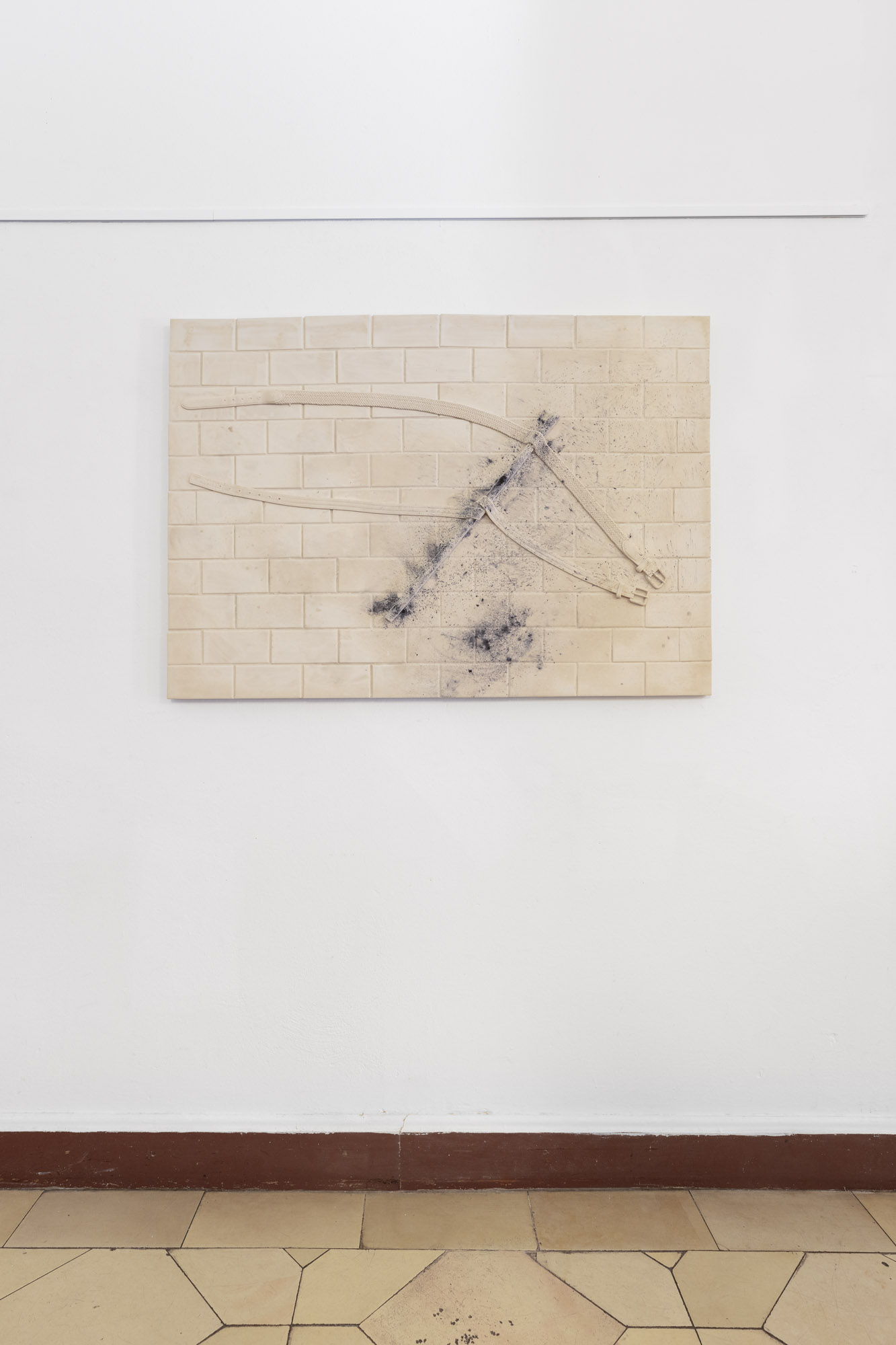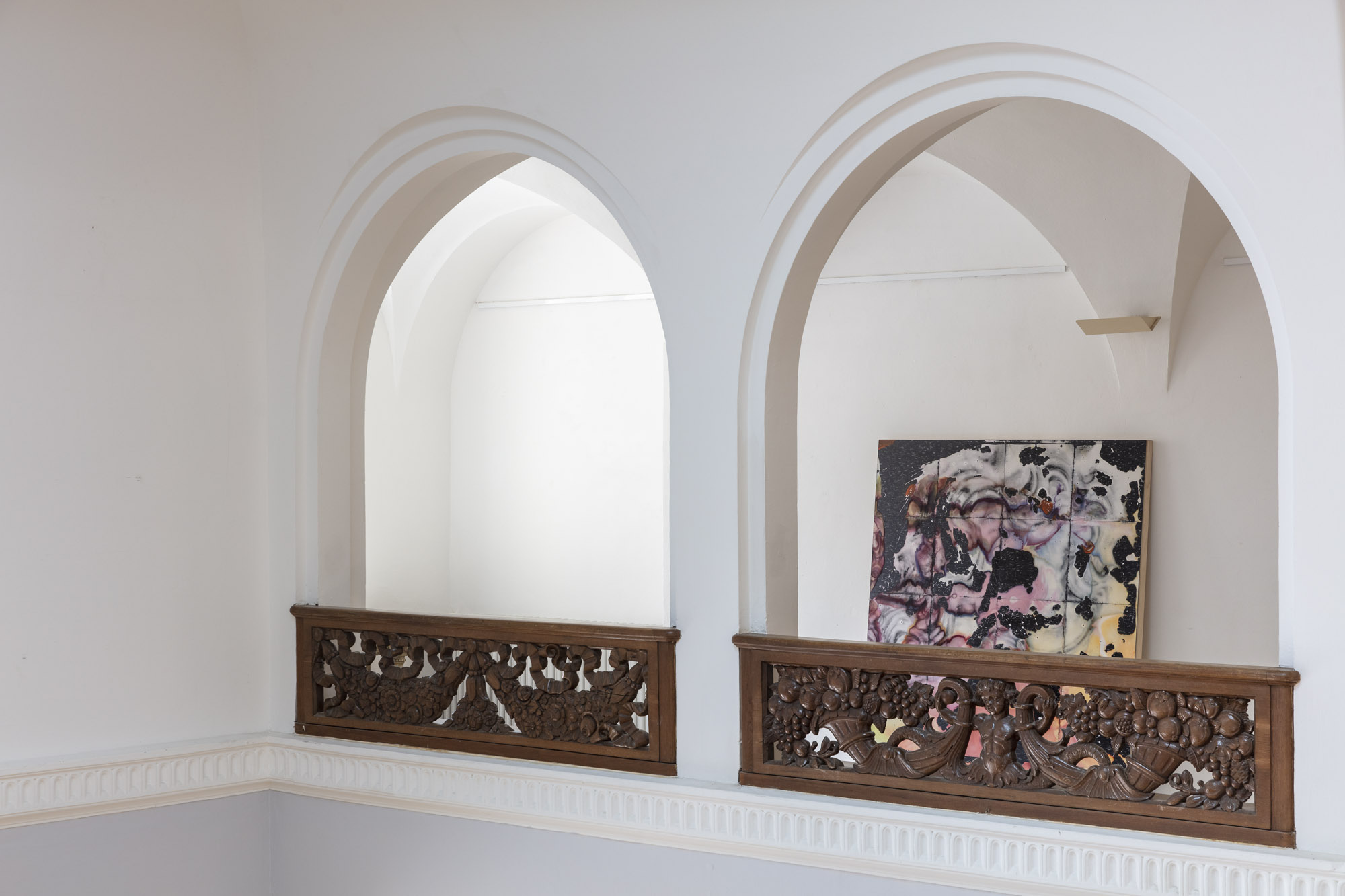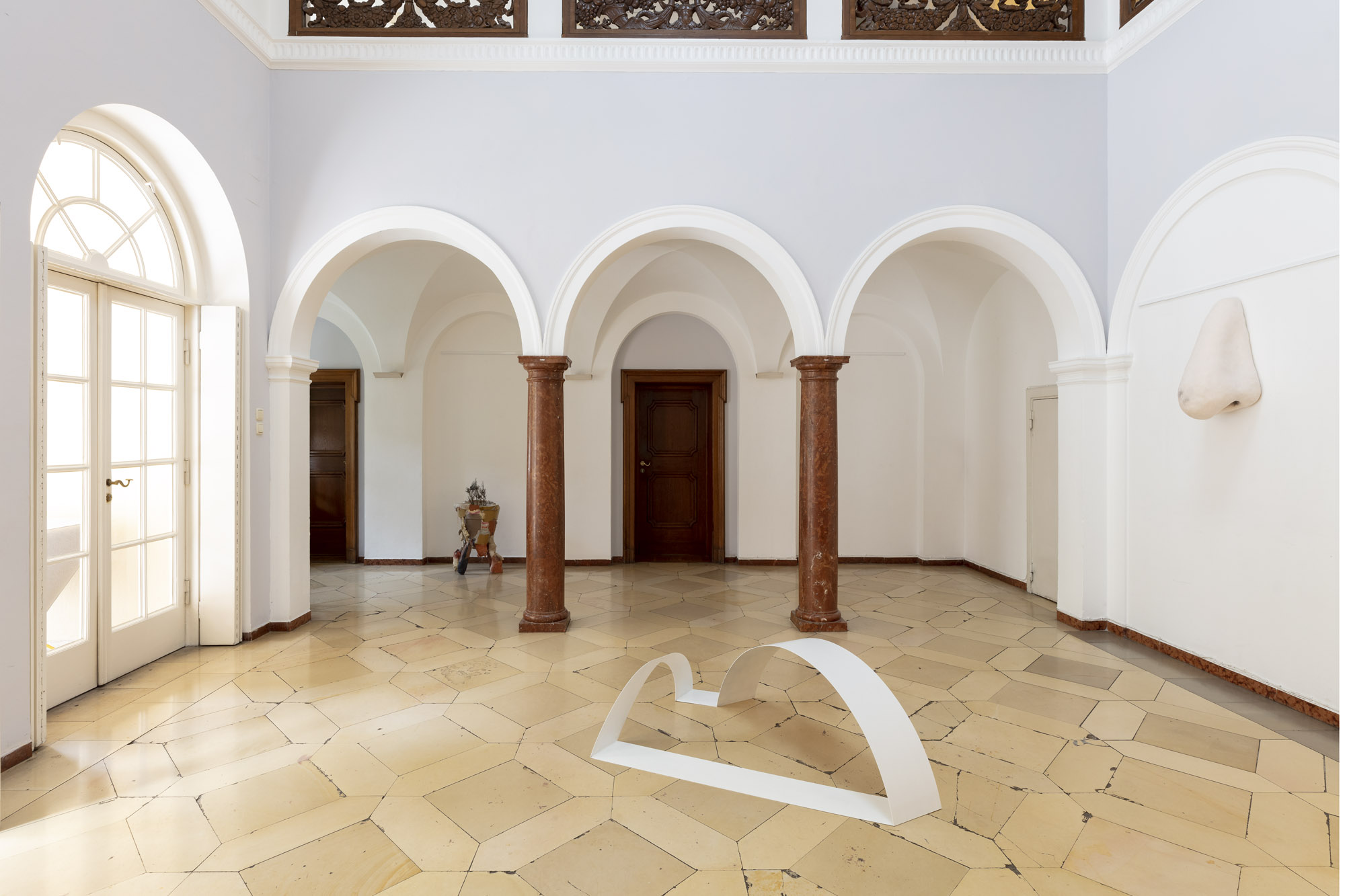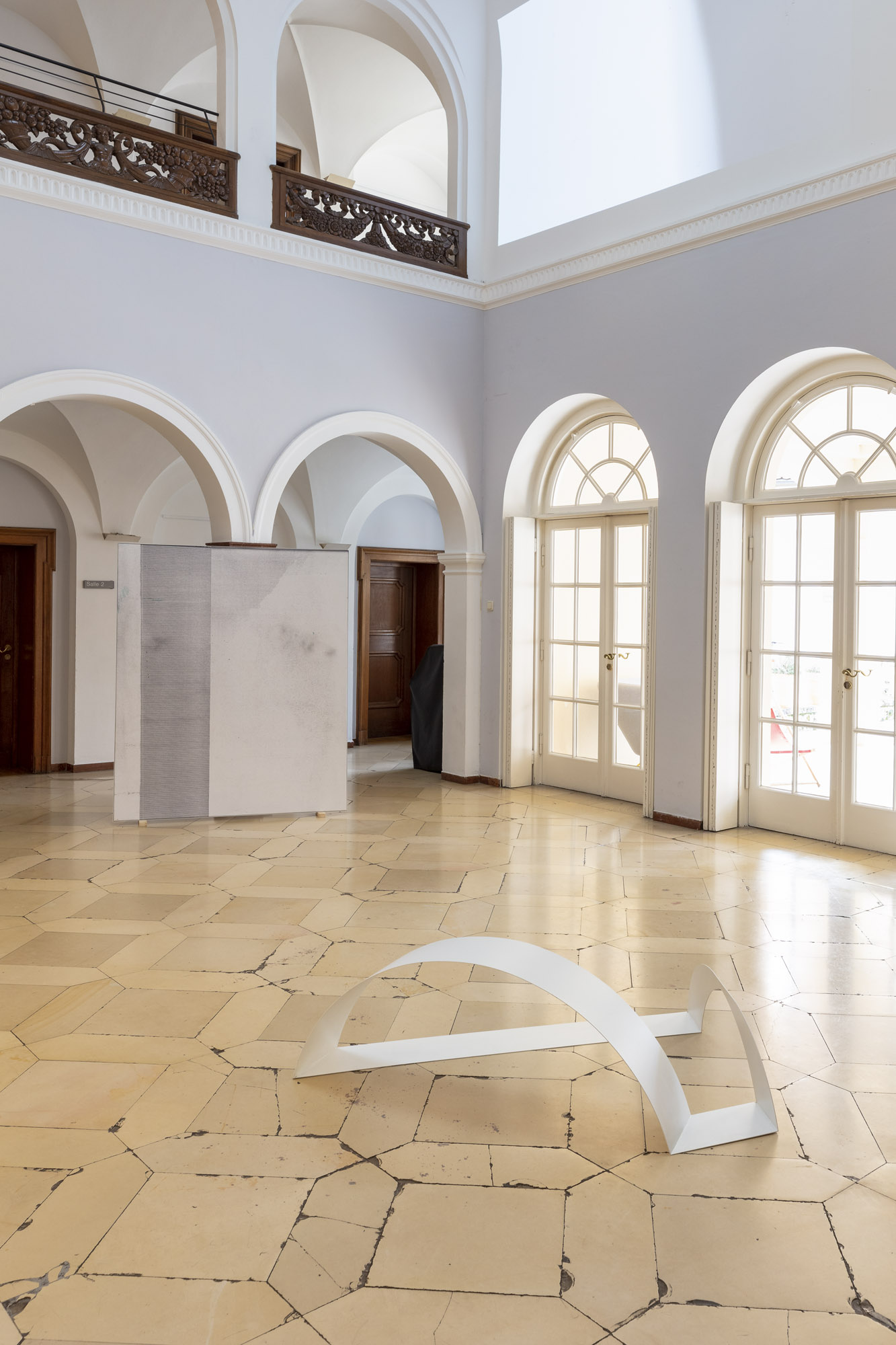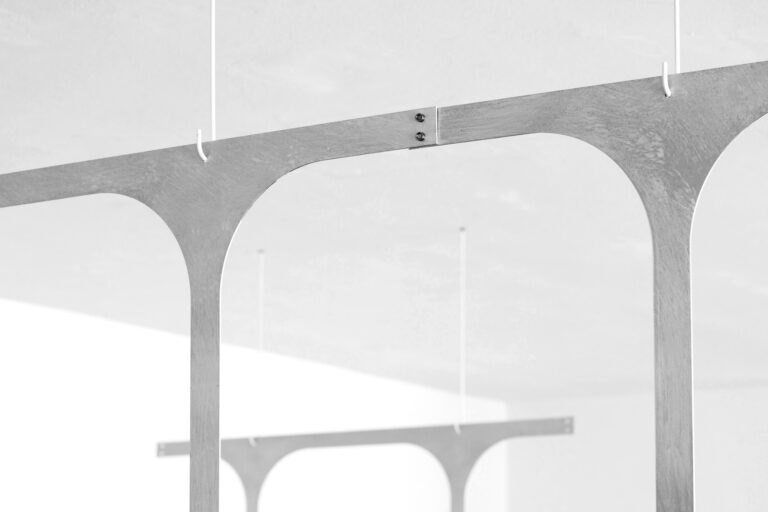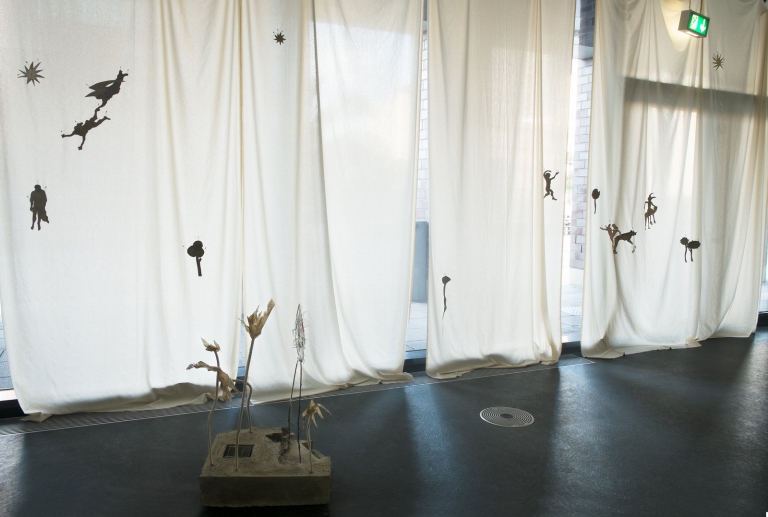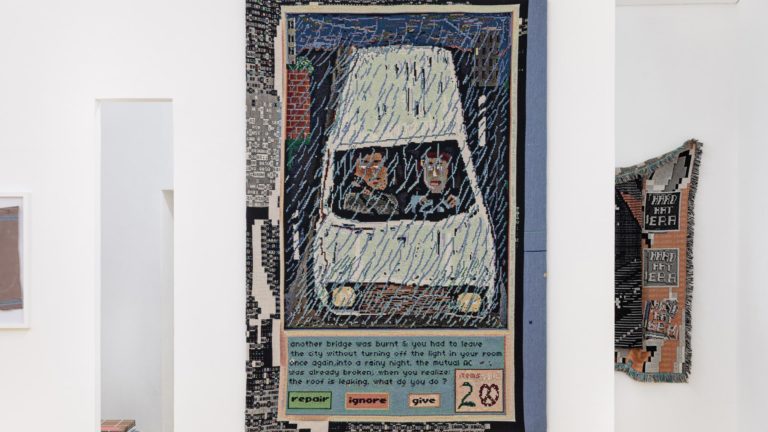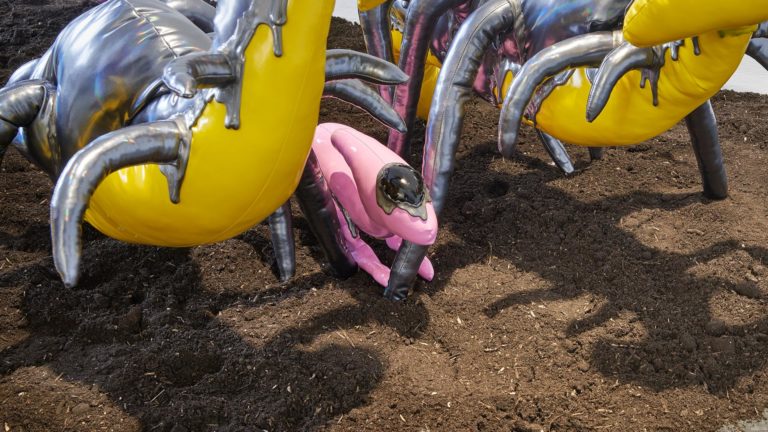Artists: Samuel Francois, Manor Grunewald, Agata Ingarden, Johanna von Monkiewitsch, Colin Penno, Eva Robarts, Loup Sarion
Exhibition title: Marks of Absence
Curated by: Berthold Pott
Venue: Institut Français, Munich, Germany
Date: October 21 – November 22, 2022
Photography: Sebastian Kissel / all images copyright and courtesy of the artists and Institut Français, Munich
The past years of pandemic and crises have confronted us with the phenomena and questions of absence and emptiness: Questions of retention, passing and death, and social isolation, as well as of the appreciation of closeness and preservation through memory, came strongly to the fore. The force of time is difficult to grasp because human memory does its best to work against it, looking for traces and signs that bring back the past.
The exhibition Traces d’absence / Marks of Absence at the Institut Français in Munich features seven artistic positions with works that address these themes from a wide variety of perspectives with various materials and media, including sculpture, painting, photography, installation, and video.
Samuel Francois’s chair sculptures made of blackened steel stand on the lawn in the autumnal garden of the Institut Français. They seem to be waiting there, as if unclaimed and obsolete. Francois had the following conceptual idea for this work: He asked his father to help him make these sculptures. Through the work, they were to come together, have conversations, cultivate familiarities. Perfection was not in the foreground, but rather only the time spent together.
With his white canvases, Manor Grunewald thematises ostensible emptiness. In the atrium of the institute, one of these works leans against a column as if temporarily deposited there. Only at first glance do his abstract white and black works appear devoid of content. Grunewald reproduced a white sheet on which a black strip of paper had been laid. Through the process of scanning, copying, and enlarging, however, errors creep in: Incidences of light, copier inaccuracies, stains etc. leave traces on the white painting ground. Barely perceptible, easily overlooked, they become the central theme of the picture.
Agata Ingarden presents three works in the exhibition. In the atrium, in a niche facing the large garden, stands the pottery work O. As if pieced together from many shards of broken flowerpots, a new vessel is assembled, a flowerpot made of fragments, as if recycled. Like the legs of a centaur, there are foot-like bulges, half plant/half animal.
The works Are you still alive and Egg Plant Power are on view in the large salon on the first floor. The former was inspired by the notion of carrying a log of wood over one’s shoulder. Two arms, protruding as if from nowhere, hold up a piece of wood wrapped in copper wire, like a coil conducting electricity.
In Egg Plant Power – a metal sculpture with a tree-like form – two copper-coloured plates are held up to the light, similar to a solar panel, covered with acoustic foam in which quail eggs are stuck. Here, the absence of life, embodied by the symbol of the egg often used in art history for the ‘what came first’ theme, points less to the past and more to the future. In particular, however, the work thematises the flow of vital energy.
The theme of preservation can also be found in the work of Johanna von Monkiewitsch: The artist ‘captures’ moments of light and thus reproduces past time via video beamer or photography. The titles of her works note the year, day, hour, minute, and second of the moment arrested by the artist. A light installation of this kind can be found in the ceiling area of the atrium. The video features a large white trapeze of light that opens and closes slightly, like a curtain. The artist observed and filmed this on the white wall of a house, on which the light and shadows of an awning blowing in the wind could be seen.
In the atrium is also a white steel sculpture by the artist. The motific source for this work was a steel arch lying in the studio, the shadow of which was visible on both the floor and the wall behind it. For the work on view, the artist merged the arch and the shadow into one form.
In the stairwell hangs a photographic work von Monkiewitsch depicting an empty frame in the sunlight. The photo is mounted in the same frame visible in the photograph; the past and the present thus overlap. The viewer sees both the image of a shadow and the actual shadow itself.
Two works by Colin Penno can be found in the small salon on the first floor. Sequence and rhythms in the form of stripes are a recurring theme in his works. For these, he uses materials that make colours and canvases appear as if behind glass, sometimes clear and smooth like the small wall piece, sometimes blurred and rough, like the large-format relief work. Like a patina that lays on the surface over time, we can only vaguely surmise what might lie behind it. Abstract colour gradients only hint at silhouettes.
Works by Eva Robart art installed in both the atrium corridor and large salon on the first floor. In the corridor, we see two steel frames covered with wire mesh, in which colourful plastic balls are stuck.
The Brooklyn-based artist observes her urban landscape in a metropolitan context and was inspired by fenced-in New York sports and game courts. There, she observed balls getting caught and stuck in the fences as children played. Here, the ball serves as a symbol of the playful, the creative, the childlike, the free, caught in the wire mesh of the fence as a symbol of limitation and barriers.
The colourful painted vinyl tile surface by Robarts, leaning against the wall opposite, has its origins in the gesture and work of cleaning the floor. For this series of MopPaintings, the artist applies paint and liquid plaster to black vinyl tiles with a mop. Unlike canvas, which soaks up paint, here the smooth tile surface repels paint and plaster, resulting in cloud-like efflorescence.
Loup Sarion deals with images and moments that only reveal extracts but nevertheless allow or hint at conclusions about the whole. In the atrium is a wall sculpture of an oversized nose made of beeswax. The nose as a central characteristic of the human face moved him to create a whole series of works, which were exhibited at the Biennale in Nice last summer. Since the rest of the face is ‘absent’, the viewer initiates a process of imagination and completion about its ‘bearer’.
Sarion’s work on the first floor, a beige and white wall panel cast in synthetic resin, also depicts fragments, in this case two belts lying on the floor. Here, the artist has chosen a material look that is reminiscent of a weathered panel or an enclosed fossil. He thus retrieves past moments and images and at the same time preserves them in an almost iconic manner.










